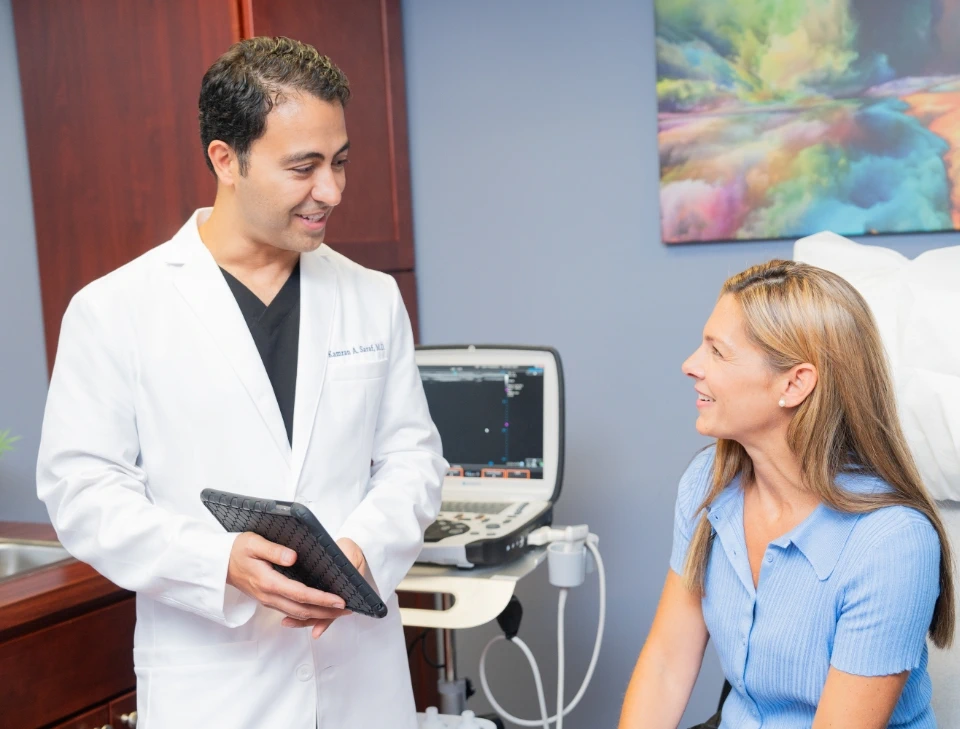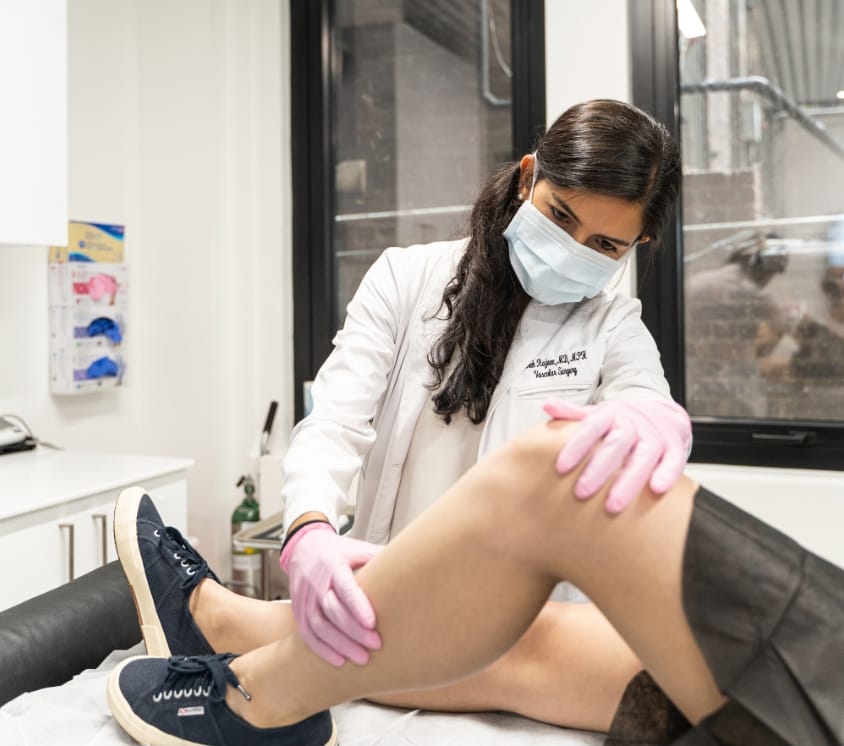The Best Veins Center in Midtown
The Spider Vein and Varicose Vein Treatment Center is widely considered the best veins center in Midtown Manhattan. Our vein center is located at 290 Madison Ave Suite 202, a short walk from Grand Central Station and Penn Station, making it one of the most accessible vein clinics in Manhattan. We also have perfect 5-star ratings and reviews from all patients on Google, which shows that we truly provide the highest standards of vein care without complications.
We can maintain unanimous 5-star ratings because of a streamlined, comprehensive, and personalized vein treatment process. Most vein centers treat spider veins and varicose veins without diagnosing the root cause, leading to a high risk of recurrence. Others provide surgical treatments for varicose veins when minimally invasive procedures are safer, more effective, and more convenient. And some vein centers don’t provide insurance coverage, even though most vein treatments are covered by insurance plans.

However, our vein center in Midtown Manhattan always diagnoses the root cause of your vein problems to ensure optimal and long-lasting results. We only provide minimally invasive procedures and avoid vascular surgeries. And we also provide hassle-free insurance verification and go above and beyond to minimize your out-of-pocket financial costs. Please continue reading to learn more about our 5-star spider vein and varicose vein treatment process.
Step 1: Consultation
Your vein care journey starts with a private consultation with our vein doctors. You’ll have to fill up some paperwork with your medical history and symptoms. The vein doctor will examine your leg veins to identify the signs and symptoms of vein disease, such as spider veins, varicose veins, skin discoloration, and leg ulcers. Chronic venous insufficiency is the root cause of all vein problems, including spider veins and varicose veins. It’s a circulatory disorder wherein your vein valves collapse, and blood accumulates in the leg veins, eventually leading to a host of problems.

Diagnosing chronic venous insufficiency is an essential first step in your vein care journey. If the vein doctor treats spider veins without addressing the root cause, the spider veins will simply return later — sort of like painting over a stained wall instead of fixing the leaky pipes underneath. The vein doctor will examine your leg veins and ask about your symptoms. The most common symptoms of vein disease include leg heaviness, frequent leg cramps, restless leg syndrome, leg swelling, and leg pain, especially with worsening symptoms at the end of the day or after long periods of sitting or standing still.
Step 2: Ultrasound Scan
The initial consultation is followed by an ultrasound diagnostic test, known as duplex ultrasound. The vein doctor will move the handheld ultrasound device over your legs to visualize the blood flow in your leg veins. Backward blood circulation and accumulated blood in leg veins indicate chronic venous insufficiency. This confirms the presence or absence of vein disease, allowing the vein doctor to curate a personalized vein treatment plan.
Step 3: Treatment Plan
Your vein doctor will curate a personalized vein treatment plan based on your diagnosis, the location and size of your spider veins and varicose veins, medical history, insurance coverage options, and other factors. They will provide an overview of all your vein treatment options, highlighting the advantages, drawbacks, and costs of all vein treatments, thus empowering you to make an informed decision. You will also receive a complete overview of your vein treatment costs, with or without insurance coverage, so you can proceed with the procedure.
Step 4: Primary Treatment
The primary vein treatment is meant for patients with chronic venous insufficiency. At this stage, the vein doctor’s primary goal is treating venous insufficiency, i.e., the diseased saphenous vein has to be removed, destroyed, or sealed shut. Radiofrequency ablation, endovenous laser ablation, and venaseal are the ideal minimally invasive procedures for vein disease.
Radiofrequency Ablation
The vein doctor makes a small incision on the skin’s surface and inserts a catheter into the diseased vein. When activated, the catheter generates radiofrequency waves to collapse the problematic vein, rerouting the accumulated blood into healthier leg veins.
Endovenous Laser Ablation
The vein doctor makes a small incision on the skin’s surface and inserts a catheter with a laser fiber into the diseased vein. When activated, the laser fiber generates laser energy to destroy the affected vein, restoring effective blood circulation to the heart.
VenaSeal
The vein doctor injects a medical-grade adhesive into the diseased vein to seal its walls shut. The accumulated blood reroutes into healthier veins, and the diseased vein eventually gets reabsorbed into the body.
Step 5: Cosmetic Treatment
After the primary vein treatment, your vein doctor will focus on removing the superficial varicose veins and spider veins. Cosmetic vein treatments, such as ambulatory phlebectomy and sclerotherapy improve your legs’ appearance.
Ambulatory Phlebectomy
The vein doctor makes small incisions on the skin’s surface to physically remove varicose veins from your legs. The incision marks eventually heal and fade away.
Sclerotherapy
The vein doctor injects a medicine called sclerosant into the spider veins. The sclerosant solution seals the spider veins’ walls, turning them into hardened scar tissues eventually absorbed by the body. The spider veins fade away in a few weeks.
Step 6: Recovery & Aftercare
Your minimally invasive vein treatment will conclude within an hour. You may experience some post-treatment discomfort and swelling, but the side effects are mild and tolerable. You’ll have to wear compression stockings and avoid heavy lifting for a few days, but you can resume daily activities and work immediately.









